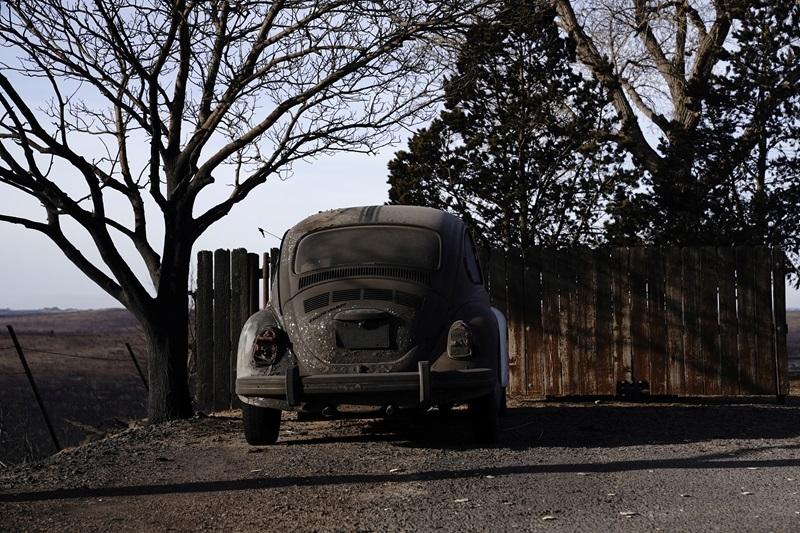Second-largest wildfire in Texas history rages across Panhandle
Published February 29, 2024 3:51am Julene Castillo tried to flee from the small Texas Panhandle town where she lives on Tuesday evening as the state’s second-largest wildfire on record approached, but she was forced back when the smoke became too thick to drive through. “The fire was burning all around us, we couldn’t get out,” […]


Julene Castillo tried to flee from the small Texas Panhandle town where she lives on Tuesday evening as the state’s second-largest wildfire on record approached, but she was forced back when the smoke became too thick to drive through.
“The fire was burning all around us, we couldn’t get out,” said Castillo, 51, in an interview on Wednesday from Canadian, Texas, population 2,500. “Even with the windows rolled up, your eyes and throat burned.”
The uncontained wildfire northeast of Amarillo has scorched 500,000 acres since Monday, the Texas A&M Forest Service said early on Wednesday, pushing eastward across the border of Oklahoma, according to a map provided by the agency.
Several smaller wildfires at various stages of containment are burning other parts of the state’s northern Panhandle, whipped up by fierce winds and hot, dry temperatures.
The area scorched by the main blaze, dubbed the Smokehouse Creek Fire, is about the size of New York City, plus sprawling Westchester County to its north.
The Forest Service said there were no reported injuries or deaths but an unspecified number of structures were damaged and destroyed.
Texas Governor Greg Abbott on Tuesday issued a disaster declaration for 60 counties and directed the Texas Division of Emergency Management to activate more than 95 firefighters as well as personnel to close roads, control traffic, offer medical aid, and provide livestock support.
The fires swept north of the U.S. Department of Energy’s Pantex plant, the nation’s primary nuclear weapons assembly, disassembly, and modification facility located near Amarillo. The threat prompted authorities on Tuesday to cease operations at the site, evacuate personnel and build a fire barrier, according to updates Pantex posted on X.
But on Wednesday, the plant was “open for normal day shift operations,” it said.
More than 13,000 Texas homes and businesses were without power as of Wednesday morning, with more than 4,000 of those in the Panhandle region alone, according to data from PowerOutage.us.
After her evacuation was thwarted, Castillo, who works as a secretary for Canadian Methodist Church, drove to the town’s high school where she and about 100 other families “sat and prayed and cried and tried to comfort each other” in the parking lot.
Several people knew their homes were already gone, and a volunteer firefighter said about 50 had burned to the ground in Canadian alone, according to Castillo. “We didn’t know what else would happen. We could see the fire’s glow as the sun went down,” she said.
Castillo returned home later Tuesday night and discovered her home had survived, so she sheltered in place. On Wednesday morning, she went to her church to keep it open for anyone needing a place to stay or pray.
Ninety percent of the largest Texas wildfires on record have occurred between the months of January and May, including the state’s biggest recorded wildfire in March 2006, according to the Texas A&M Forest Service.
Multiple studies have found that human-induced climate change is likely to extend the state’s fire season. The period of extreme wildfire danger could increase up to 40 days in Texas and surrounding states by 2100, according to a December study by scientists at two universities and a national U.S. laboratory. — Reuters














